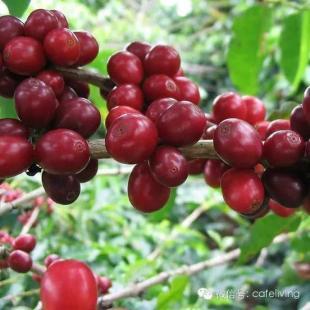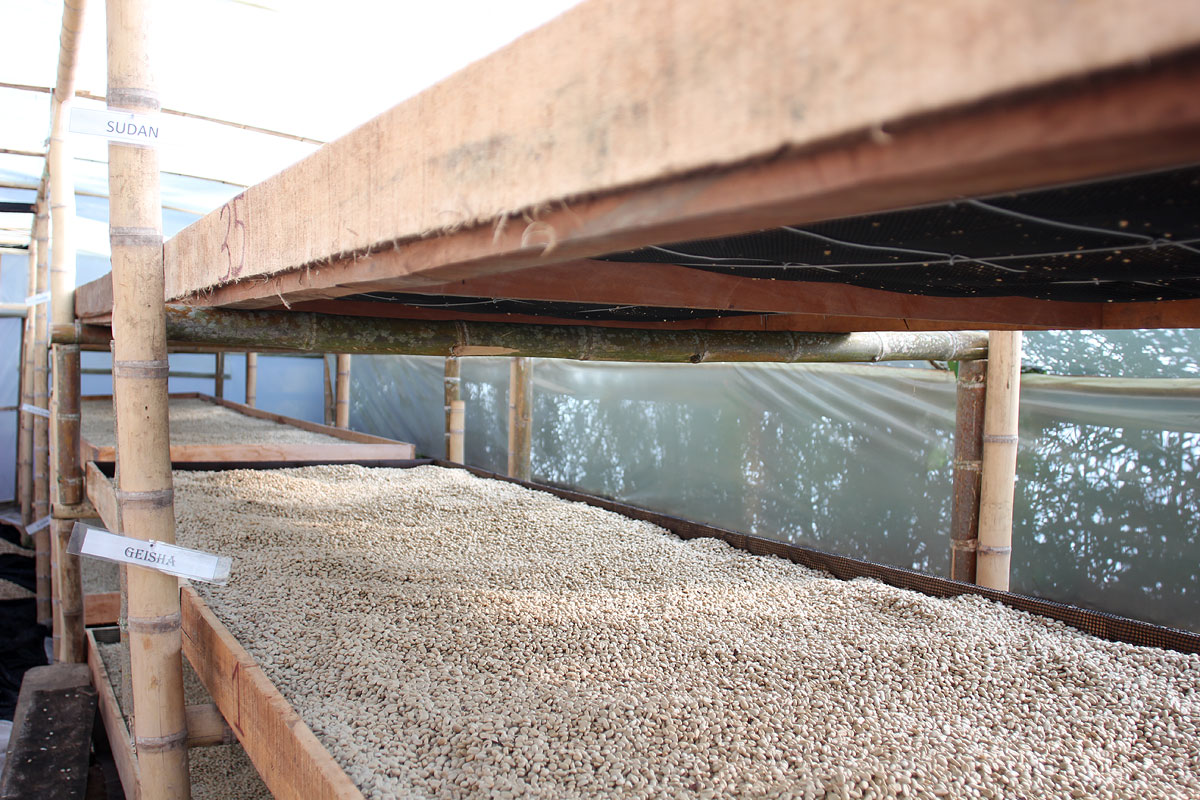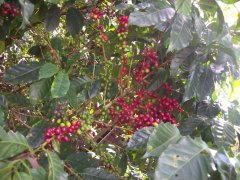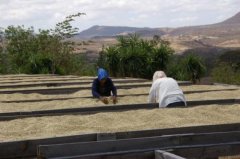Data of hand-brewing temperature, grindability and powder-water ratio of Ecuadorian coffee
For professional baristas, please follow the coffee workshop (Wechat official account cafe_style)

Ecuador is located in South America, and the equatorial line runs through the country, so it is also known as the "country of the equator". Its superior geographical location, fertile soil and special climatic conditions create a superior natural environment for coffee bean cultivation. Most countries in the world are rich in only one kind of coffee beans. Ecuador, on the other hand, is one of the few countries in the world that can produce both Arabica and Robusta coffee beans. The Ecuadorian Coffee tasting, hosted by the Consulate of Ecuador in Guangzhou, recently held a boutique coffee recognized as natural green in the art cafe of the Guangdong Provincial Museum. this naturally grown coffee has a mild taste with a hint of flowers and fruit and caramel. It is understood that the Galapagos Islands are about 1000 kilometers away from the mainland of Ecuador and are located at the confluence of the eastern Pacific Ocean and the three major ocean currents. In 1978, the Galapagos Islands was declared a "World Natural Heritage site" by UNESCO.
The archipelago is known as the "living Museum of Biological Evolution" and "the melting pot of marine life". Darwin's "theory of evolution" is inspired by organic beans, flowers and fruits in the Galapagos Islands, and caramel fragrance. Ms. Malena, Consulate General of Ecuador in Guangzhou, said that coffee buyers from Guangdong have gone to Ecuador to buy coffee beans. Coffee lovers in Guangzhou will soon be able to taste the fragrant Ecuadorian coffee in the street cafes. The coffee beans produced in Ecuador's Galapagos Islands are organic coffee beans, thanks to the unique ecological environment such as volcanic soil and microclimate, as well as the fact that they do not use any fertilizers and pesticides. Mr. Veniso, champion of the 2014 Ecuador Coffee Competition, told reporters that in Ecuadorian coffee. Some are espresso made from Ecuadorian alpine coffee beans. This coffee comes from a mountain area about 1000 to 2000 meters above sea level. It has a mellow taste, with aromas and sweetness of fruit, grass and chocolate. Some add mint grass from the Amazon to this espresso, while others add Ecuadorian rose petals called "Rolls-Royce in the Rose" to the espresso.
Ecuador is one of the few countries in South America that produces both Arabica and robusta coffee. However, as the land suitable for Arabica coffee trees is decreasing, the production of robusta coffee is gradually increasing. The best Arabica coffee comes from the Andes, especially the Chanchagu Valley (ChanchamgoValley), which is divided into two series of mountains, extending from south to north to central Ecuador. The main problem for coffee producers is to strive to maintain stable quality.
The coffee in the area is generally well-balanced and refreshing, and a unique aroma Arabica coffee tree was first introduced to Ecuador in 1952, and its coffee quality is very good, especially the coffee harvested in early June. Ecuadorian coffee beans can be divided into two varieties: Galapagos and Gigante, both of which have the characteristics of large granules and heavy weight. Ecuadorian coffee can be divided into first class (No.1) and super excellent (ExtraSuperior) according to its quality.

They are mainly exported to Ecuador, the Nordic country of Scandinavia, which is the highest Arabica coffee plantation in the world. Since the coffee tree was first introduced into Ecuador in 1875, the quality of its coffee has remained unchanged for 100 years, especially the coffee harvested in early June every year, which is called "the best coffee in the world". Ecuadorian coffee beans are divided into Galapagos and Segante, both of which have large particles and heavy weight. In particular, the unique geographical conditions of the Galapagos Islands give coffee beans excellent genes that are superior to those of other producing areas, and its high quality comes from the absence of any chemical agents when growing. As Ecuador's land suitable for Arabica coffee trees is gradually decreasing, Galapagos coffee is even more precious.
Make Ecuadorian coffee by hand. 15g powder, medium fineness grinding (sugar size), v60 filter cup, 90 degrees water temperature, 30g water injection for the first time, steaming for 30 seconds, water injection to 105g water cut off, wait for the powder bed water to reach half, then water injection, slow and uniform water injection until 225g water, finally shake the filter cup to increase the extraction, the ratio of water to powder is 1:15, and the extraction time is 2:04.
Important Notice :
前街咖啡 FrontStreet Coffee has moved to new addredd:
FrontStreet Coffee Address: 315,Donghua East Road,GuangZhou
Tel:020 38364473
- Prev

Coffee growing in Ecuador, Ecuador
Weixin Official Accounts cafe_style Ecuador, full name of Ecuador (Spanish: Repblica del Ecuador) is a country located in the northwest of South America, adjacent to Colombia in the north, Peru in the south, the Pacific Ocean in the west, Chile and South America are not adjacent to Brazil. It has jurisdiction over other countries with a distance from Colombia.
- Next

Introduction to Panamanian sun sun Jason rose summer hand flushing temperature, powder / water ratio, grinding degree and techniques
For the exchange of professional baristas, please pay attention to the coffee workshop (Wechat official account cafe_style) Geisha pronunciation is the same as Japanese geisha, so some are also called geisha coffee; because the tree species are taller than ordinary coffee trees, they were originally planted in a small area of the manor and were used as windbreaks. And the son of the manor owner searched everywhere in order to participate in the annual competition for the best coffee in Panama.
Related
- Detailed explanation of Jadeite planting Land in Panamanian Jadeite Manor introduction to the grading system of Jadeite competitive bidding, Red bid, Green bid and Rose Summer
- Story of Coffee planting in Brenka region of Costa Rica Stonehenge Manor anaerobic heavy honey treatment of flavor mouth
- What's on the barrel of Blue Mountain Coffee beans?
- Can American coffee also pull flowers? How to use hot American style to pull out a good-looking pattern?
- Can you make a cold extract with coffee beans? What is the right proportion for cold-extracted coffee formula?
- Indonesian PWN Gold Mandrine Coffee Origin Features Flavor How to Chong? Mandolin coffee is American.
- A brief introduction to the flavor characteristics of Brazilian yellow bourbon coffee beans
- What is the effect of different water quality on the flavor of cold-extracted coffee? What kind of water is best for brewing coffee?
- Why do you think of Rose Summer whenever you mention Panamanian coffee?
- Introduction to the characteristics of authentic blue mountain coffee bean producing areas? What is the CIB Coffee Authority in Jamaica?

